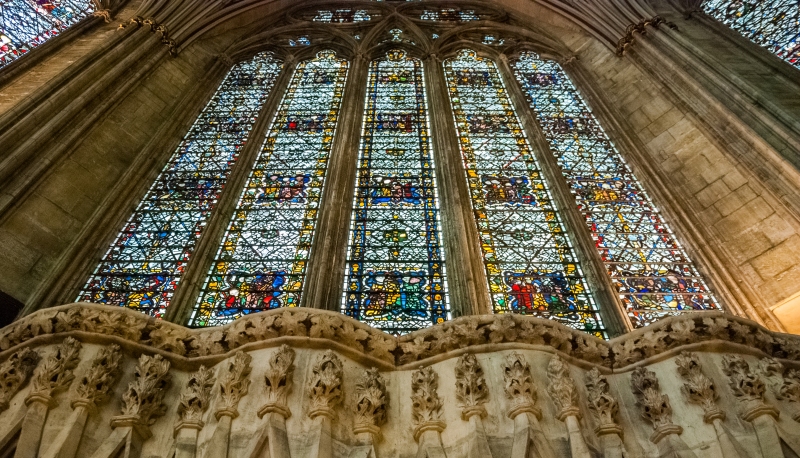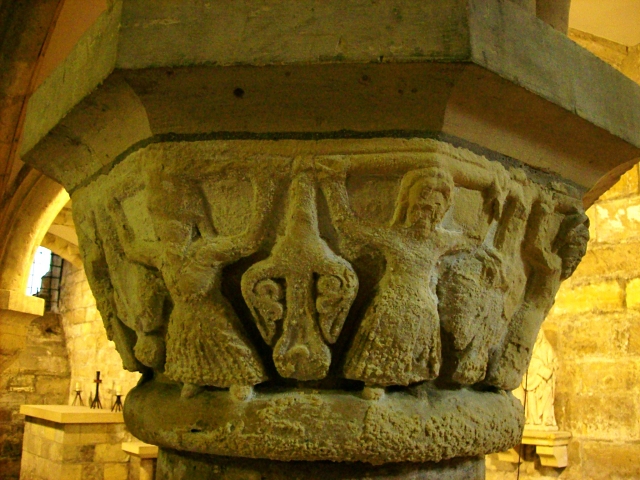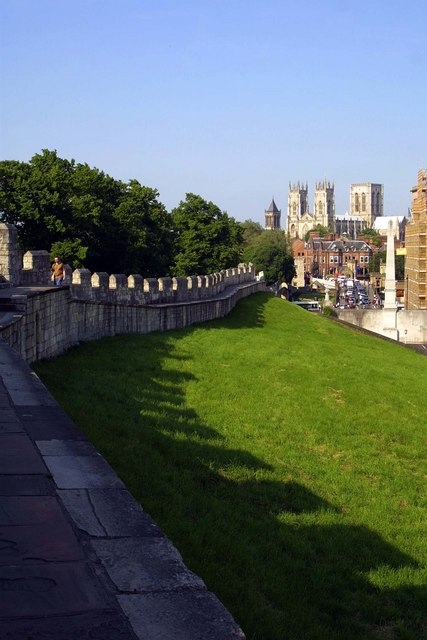
My neck is getting sore from gazing up in wonder at the stained glass windows. I eye the scaffolding that is set up down the length of the Nave speculatively, trying to imagine the view that the workmen must have from way up on high.
We wind around this way and that, viewing the splendor in the North Transept, Choir and Nave. The Chapter House is closed due to the Mystery Plays, which is a little disappointing, once I hear that it holds some of the Minster's finest carvings. Just as I believe that we've seen it all and that we are on our way out (man), we descend to the Undercroft and Crypt.
I am rendered speechless. Nothing I've ever read or heard about York Minster has mentioned these treasures underground. I am standing between the columns of the basilica, the vast assembly hall, of the Roman fortress of Eboracum and I am surrounded by carved stones from Anglo-Saxon graves dating back to the 7th century.
In the Treasury, there's an incredible collection of artifacts dating from the 11th to 20th centuries. I'm feeling a bit overwhelmed by this time; as if my entire lifetime, or generation, or century is merely a blink of the eye in the grand scheme of things. Indeed, it is.
Shaking myself mentally, I wander into the crypt where the remains of Norman carved stone columns greet me and invite me to fit my fingertips inside the ancient grooves,which I do. The designs are geometric and look almost modern. A large model in a chamber off to the left gives an overview of how all of these gathering places and houses of worship fit together.
As we prepare to ascend from the Undercroft, and back into the 21st century, we passed a 1st century Roman culvert which drained the area north of the Minster and carried the water to the River Ouse. There's also a raised well, the bottom glittering with coins of all sizes, shapes and colors. With over 250,000 visitors each year I imagine that the entire world must certainly be represented at the bottom of that well.
Leaving the Minster, I am dazzled not only by the splendor I've just viewed, but how the sky has cleared. Apparently I'm not the only person to have noticed that it has turned out to be a gorgeous summer day, because York has become an incredibly busy place. Although I live in a metropolitan area that is home to a population of over a million people, I am not a city person and am not too crazy about spending the remainder of this beautiful day within the confines of the crowds.
After a short walk on the city walls we'd seen the night before, during which time I alternately admire the view and feel like a voyeur peering into the beautifully maintained gardens in the residents' back yards, we flee the city for the Yorkshire countryside once more.

The church was damaged in 1069 during William the Conqueror's harrying of the North, but the first Norman archbishop, Thomas of Bayeux, arriving in 1070, organized repairs. The Danes destroyed the church in 1075, but it was again rebuilt from 1080.
The new structure was damaged by fire in 1137 but was soon repaired. The choir and crypt were remodeled in 1154, and a new chapel was built, all in the Norman style.
Read more about York Minster at Wikipedia.

York has, since Roman times, been defended by walls of one form or another. To this day, substantial portions of the walls remain, and York has more miles of intact wall than any other city in England. They are known variously as York City Walls, the Bar Walls and the Roman walls.
Read more about the York City Walls at Wikipedia.